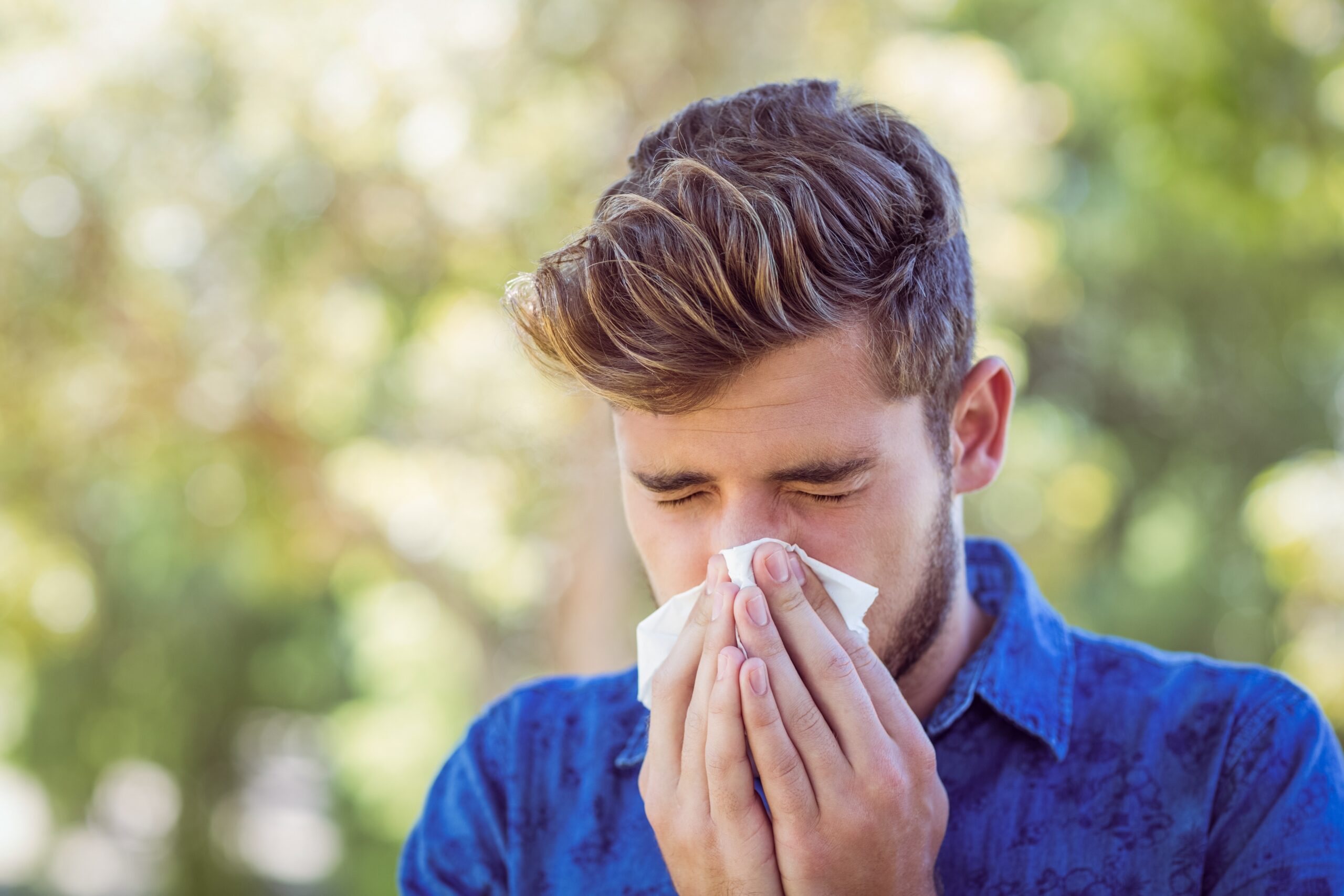
The shift from the cold dormancy of winter to the sudden, vibrant bloom of spring is a sensory transformation that millions of people anticipate, yet for those susceptible to allergic rhinitis, commonly known as hay fever, this seasonal transition signals an impending period of congestion, sneezing, and ocular irritation. The fundamental misunderstanding about spring allergies is the tendency to assign blame too broadly—a common, generalized assumption that “everything green” is the culprit. In reality, the most irritating offenders are often specific, wind-carried particles that appear long before the aesthetically pleasing flowers begin to open their petals. Navigating the spring season successfully requires a more granular understanding of these atmospheric and environmental triggers, moving past generic advice to a more precise, anticipatory strategy of avoidance and pre-emptive treatment. It’s not just about the big, showy flowers; it’s the microscopic dust from specific botanical processes that initiates the entire inflammatory cascade, demanding a detailed focus on the mechanics of plant life and airborne particulate matter.
The most irritating offenders are often specific, wind-carried particles that appear long before the aesthetically pleasing flowers begin to open their petals.
The fundamental misunderstanding about spring allergies is the tendency to assign blame too broadly—a common, generalized assumption that “everything green” is the culprit.
The allergy season often begins much earlier than most people realize, frequently starting in late winter or early spring with the arboreal emissions. The most irritating offenders are often specific, wind-carried particles that appear long before the aesthetically pleasing flowers begin to open their petals. Trees are the first major contributors to the airborne pollen load, with species like Oak, Birch, Maple, and Cedar releasing fine, powdery grains into the atmosphere long before the grass starts to grow vigorously. It is critical to note the difference between these wind-pollinated trees and the large, brightly colored flowers that are pollinated by insects; the latter, while visually prominent, produce heavier pollen that rarely becomes airborne in large, irritating quantities. The tree pollen is light and easily transported vast distances by the wind, meaning that even if there are no allergy-inducing trees immediately outside a home, an individual can be affected by plumes originating miles away. This early onslaught sets the stage for a protracted season of symptoms, which is why experts often stress initiating antihistamine therapy weeks before the visible bloom.
Tree pollen is the first pollen to appear each year in the United States.
Trees are the first major contributors to the airborne pollen load, with species like Oak, Birch, Maple, and Cedar releasing fine, powdery grains into the atmosphere long before the grass starts to grow vigorously.
The chronology of pollen release is key to managing spring allergies, and Tree pollen is the first pollen to appear each year in the United States. As temperature profiles shift and average spring warmth arrives earlier due to broader climatic changes, the tree-pollen season is becoming both more intense and longer. It is not just the volume of the pollen that matters, but its specific allergenic properties. For instance, Birch pollen is notoriously allergenic and often cross-reacts with certain raw fruits and vegetables, a condition known as Pollen-Food Allergy Syndrome (PFAS) or Oral Allergy Syndrome (OAS). This means an individual’s physical discomfort may extend beyond the typical respiratory symptoms to include an itchy mouth or throat after consuming, for example, apples or raw carrots during peak spring. Understanding the specific botanical origins of one’s allergy—a process usually determined through allergy testing—is far more effective than simply masking generalized symptoms with over-the-counter decongestants.
The chronology of pollen release is key to managing spring allergies.
Grass pollens take over the primary irritant role from trees, typically dominating the air from late spring through early summer.
As the dominance of tree pollen wanes, a new wave of allergens emerges, necessitating a shift in avoidance tactics. The chronology of pollen release is key to managing spring allergies. Grass pollens take over the primary irritant role from trees, typically dominating the air from late spring through early summer. Unlike tree pollen, which can reach high levels earlier in the day, grass pollen concentrations often peak around midday and early afternoon, especially on warm, breezy days. This presents a different set of challenges for individuals whose outdoor routines—like exercise or yard work—coincide with these peak times. Common lawn grasses, such as Bermuda, Timothy, and Kentucky Bluegrass, are highly allergenic, and activities that disturb them, such as mowing or weeding, launch massive, concentrated clouds of allergens directly into the breathing zone. Effective management for this phase often involves delegation of yard work, or the use of heavy-duty particulate masks for necessary outdoor tasks.
Mold spores are everywhere. These particles just need a little exposure to water to begin to grow and multiply.
A rainy spring can also promote rapid plant growth and lead to an increase in mold, causing symptoms to last well into the fall.
One of the most insidious and often underestimated springtime culprits is mold. While often associated with damp indoor spaces, Mold spores are everywhere. These particles just need a little exposure to water to begin to grow and multiply on decaying organic matter outside, such as fallen leaves, compost piles, and woodpiles. A rainy spring can also promote rapid plant growth and lead to an increase in mold, causing symptoms to last well into the fall. Spores from outdoor molds, like Alternaria and Cladosporium, become airborne and behave much like pollen, traveling long distances to irritate the nasal and bronchial passages. After a spring rain, when pollen counts are temporarily suppressed, mold spore counts can surge as the moisture encourages their proliferation. This makes it crucial to monitor both pollen and mold reports, especially following periods of heavy rainfall and subsequent warmth, as the allergy trigger dynamic can suddenly switch.
Pollen doesn’t stop outside your front door. It can float inside your home on air currents or hitch a ride on clothing.
Indoor air quality quickly degrades when the pervasive outdoor allergens are not diligently excluded.
A common oversight among allergy sufferers is the failure to recognize that their sanctuary—the indoor environment—can become contaminated, transforming it into a secondary source of irritation. Pollen doesn’t stop outside your front door. It can float inside your home on air currents or hitch a ride on clothing. Indoor air quality quickly degrades when the pervasive outdoor allergens are not diligently excluded. Every time a window is opened, or a door is used, microscopic particles from trees and grass are introduced. These then settle onto upholstery, bedding, and carpeting, where they combine with existing indoor allergens like dust mites and pet dander, creating a compounding effect that can make nighttime symptoms worse. Therefore, the essential defensive strategy indoors is to use High-Efficiency Particulate Air (HEPA) filters in critical rooms and to run the air conditioning with a high-quality filter, ensuring windows remain firmly closed during high-pollen days.
The daily introduction of outside pollutants and allergens on clothes, hair, and skin is often a neglected vector.
Shower and change your clothes after spending time outdoors to reduce the amount of pollen you bring inside.
The human body itself acts as a passive, yet remarkably efficient, transport mechanism for environmental allergens. The daily introduction of outside pollutants and allergens on clothes, hair, and skin is often a neglected vector. An hour-long walk in the park can coat hair and clothing with thousands of pollen grains that are subsequently shed onto pillows and sheets. The recommendation to Shower and change your clothes after spending time outdoors to reduce the amount of pollen you bring inside is not a formality; it is a clinical necessity for mitigating evening and overnight symptoms. Simply removing outerwear at the door and washing hair before bed can significantly reduce the patient’s exposure to the day’s collected pollen, preventing the eight or more hours spent sleeping from becoming a continuous exposure event that disrupts rest and recovery.
Your body thinks these harmless particles are dangerous foreign invaders.
The immune system is programmed to defend the body against perceived threats, even those that pose no genuine danger.
At a biological level, the mechanism of an allergic reaction is a case of mistaken identity. Your body thinks these harmless particles are dangerous foreign invaders. The immune system, in its zeal to protect the body, misinterprets the proteins on a pollen grain as a genuine threat. This triggers a massive release of inflammatory chemicals, most notably histamine, which is the agent responsible for the classic symptoms: the copious mucus production, the relentless sneezing, and the itchy, watery eyes. The immune system is programmed to defend the body against perceived threats, even those that pose no genuine danger. This overzealous response highlights why simply avoiding the pollen is often insufficient; for many, a combination of allergen avoidance and pharmaceutical intervention—using antihistamines or corticosteroid nasal sprays—is necessary to modulate the body’s exaggerated inflammatory cascade.
The most potent form of medicine is often preventative and behavioral.
Initiating treatment before the onset of symptoms is a fundamental principle of successful allergy management.
Successful spring allergy management is less about reactive treatment and more about strategic preparation. The most potent form of medicine is often preventative and behavioral. Initiating treatment before the onset of symptoms is a fundamental principle of successful allergy management. Allergy experts frequently advise beginning daily medication one to two weeks prior to the projected start of the local pollen season. This pre-emptive dosing allows the medication to accumulate in the system and effectively block the histamine receptors before the major pollen load hits the nasal passages. This strategy prevents the severe inflammatory response from ever taking root, making symptoms significantly milder and easier to control, rather than trying to dampen a full-blown reaction after it has already begun.
Moving to another climate to avoid allergies is usually not successful.
Allergens are virtually everywhere.
A commonly held, yet ultimately impractical, solution for chronic allergy sufferers is geographic relocation. Moving to another climate to avoid allergies is usually not successful. While it is true that certain high-allergy regions might offer momentary relief in a completely different area, this respite is typically short-lived. The human body often develops sensitivities to the new native flora within a few seasons. Allergens are virtually everywhere, and while the specific type of pollen might change from Birch to Olive or Ragweed, the inflammatory mechanism of the immune system remains. True long-term relief necessitates a targeted medical approach, often involving allergy shots (immunotherapy), which gradually desensitize the body to specific allergens, offering a fundamental change in the immune response rather than a temporary environmental fix.
The specific timing and intensity of the allergic season are inextricably linked to weather patterns.
Pollen counts tend to be highest early in the morning on warm, dry, breezy days and lowest during chilly, wet periods.
Finally, the entire allergic experience is modulated by the daily interplay of meteorological variables. The specific timing and intensity of the allergic season are inextricably linked to weather patterns. The worst days for sufferers are predictable: warm, sunny, and windy days, which are optimal for pollen release and transport. Pollen counts tend to be highest early in the morning on warm, dry, breezy days and lowest during chilly, wet periods. Rain washes pollen out of the air, offering temporary, much-needed relief. Conversely, a sudden drop in temperature or an unexpected late frost can momentarily stall the entire process. Utilizing accurate, local pollen forecasts and adjusting outdoor activities based on these daily micro-climatic conditions is a simple, non-pharmacological tactic that provides substantial control over the day-to-day burden of symptoms.
